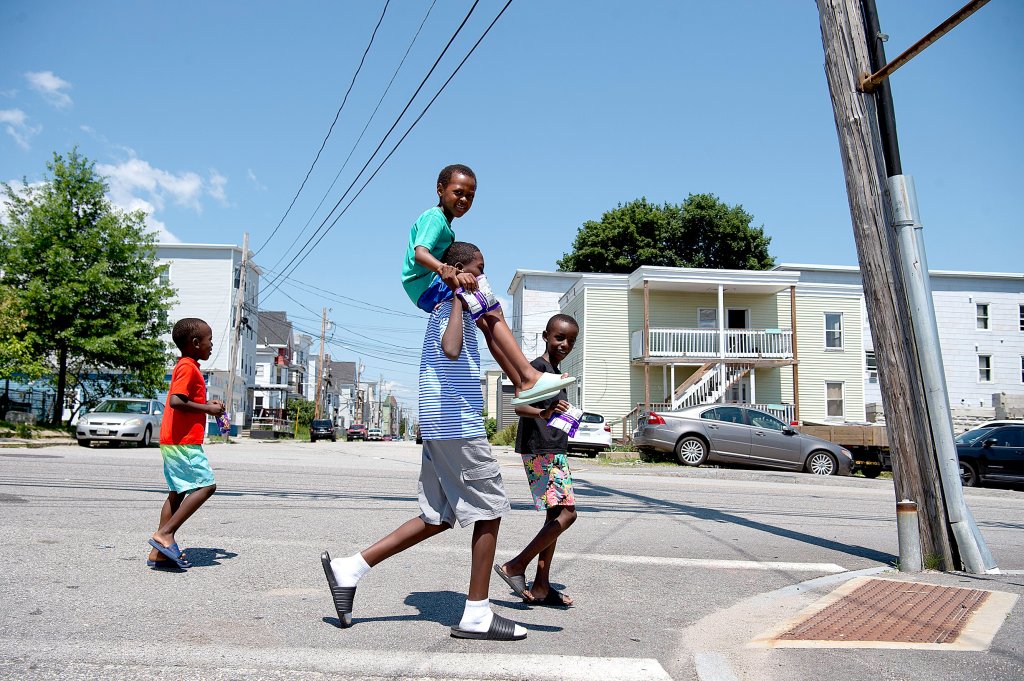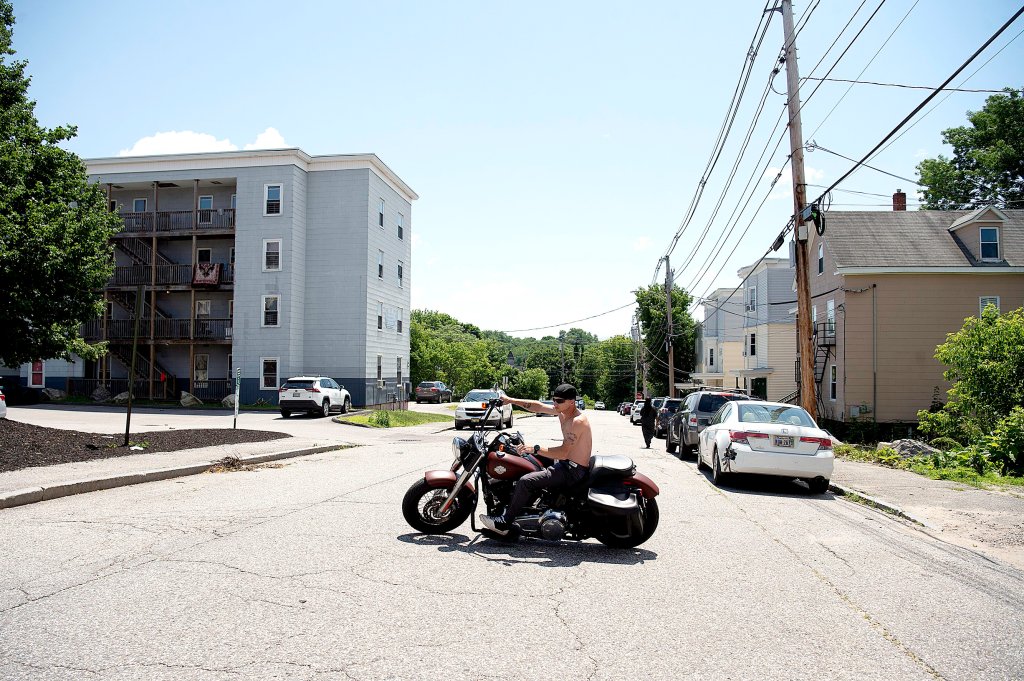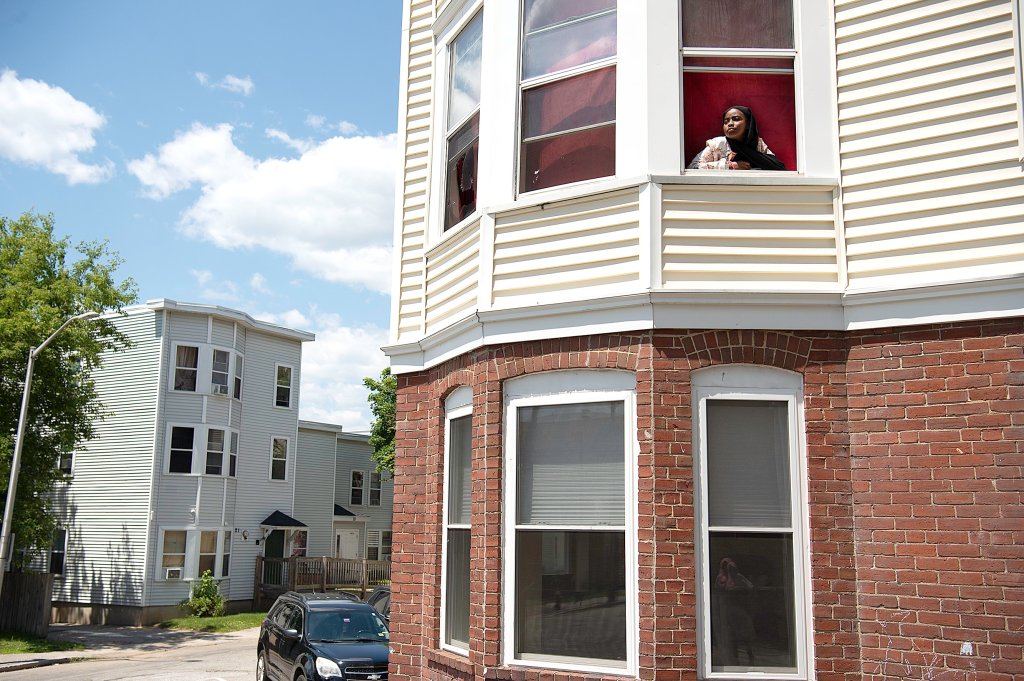LEWISTON — The city has conditional approval for a proposal to plant more trees in its Tree Streets neighborhood.

Tree-shaded street illustration, 1899. The Lewiston Daily Sun
“This grant opportunity comes from the Governor’s Office of Policy, Innovation, and the Future,” said Jacqueline Crucet, a neighborhood development planner with Lewiston’s Department of Economic and Community Development.
The conditional approval is pending some clarifications on the proposal, Crucet said. “We’ve requested $50,000, (which has been approved) but we haven’t been awarded $50,000 yet.”
Once an executive plan is finalized in the coming weeks, the city will plant more trees in the Tree Streets neighborhood by the next two years.
“We have a two-year timeline for full completion. We could do this sooner, but we want to do a lot of community engagement around this work. So, we’re taking it a little bit slower,” Crucet said.
The project will be carried out with the help of Lewiston Public Works, as well as several community partners that will be determined in the next weeks. One of these partners might be the Lewiston-Auburn Tree Board, Crucet said.
According to the proposal, the project could start later this summer.
“Having tree-lined streets is not only beautiful, but cooling and offering habitat to wildlife, as well as shade for pedestrians,” Crucet said. “We have a lot of pedestrians in our downtown community. The benefits are there. Trees also help with soaking water up, improving our resilience with storms. You just need the right trees in the right places.”

Halima Brahim, 11, sits in her apartment window Tuesday on Knox Street in Lewiston. “I would like to have more trees around,” she said. “It would be nice because we don’t have many around.” Daryn Slover/Sun Journal
Finding the right trees for urban settings like the Tree Streets neighborhood needs rigorous work, Steve Murch, the city of Lewiston’s arborist, said. The challenges are plenty.
“The problem we have with planting more trees downtown, and this includes the Tree Streets, is lack of space within the right of way. We can only work within the right of way,” Murch said. “Sometimes in certain areas behind the sidewalk, there’s a little bit of room that might be grass or somewhere you could plant a tree. In the downtown area, it’s often private property because it’s such an old neighborhood. There’s no place to plant a tree.”
Even if a potential spot is found, Murch has to consider many other factors before planting a sapling in that spot.
“A right spot is where it’s not going to get hit by snow plows or dump trucks and things like that,” he said. “I got to look out for all the underground and overhead utilities. Then, I should find a tree that will tolerate the crappy conditions of growing surrounded by asphalt and concrete.”

This stereoscope photograph of Pine Street from about 1885 shows a line of trees gracing its western side next to the old DeWitt Hotel at the corner of Park Street. Private collection
“We use a lot of pin oak and elm varieties,” Murch said. “Those are trees that I use for spots where you can get big. You can have a tree eventually that would be 40, 50, 70 feet tall. Pin oak and these elm varieties get really big and they’re very tolerant of heat, drought, poor soil, that type of stuff.”
In smaller spaces similar to downtown Lewiston, fruitless trees are preferred.
“In small areas, we use certain types of hawthorns that are fruitless, or crab apples or cherries that don’t bear fruit, so they don’t make a mess on sidewalks. These get to be about 20 to 25 feet tall,” Murch said.
It remains to be seen what tree species will be planted in the Tree Streets neighborhood once an executive plan is in place.
Send questions/comments to the editors.






We invite you to add your comments. We encourage a thoughtful exchange of ideas and information on this website. By joining the conversation, you are agreeing to our commenting policy and terms of use. More information is found on our FAQs. You can modify your screen name here.
Comments are managed by our staff during regular business hours Monday through Friday as well as limited hours on Saturday and Sunday. Comments held for moderation outside of those hours may take longer to approve.
Join the Conversation
Please sign into your Sun Journal account to participate in conversations below. If you do not have an account, you can register or subscribe. Questions? Please see our FAQs.